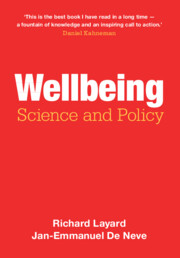References
Published online by Cambridge University Press: 12 May 2023
Summary
- Type
- Chapter
- Information
- WellbeingScience and Policy, pp. 296 - 330Publisher: Cambridge University PressPrint publication year: 2023
- Creative Commons
- This content is Open Access and distributed under the terms of the Creative Commons Attribution licence CC-BY-NC-ND 4.0 https://creativecommons.org/cclicenses/



